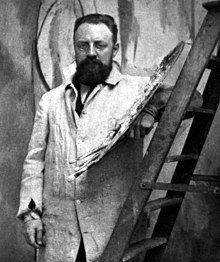Salvador Dali
Salvador Dali
During his career, he focused on cubism, futurism, as well as metaphysical painting work, until in 1929, he joined the group of surrealists, and this art movement which he felt a connection to. His fame and notoriety, and talent in the art world, quickly made him a leading force in the Surrealist movement, and he became one of the representatives of the art movement during the 1930s.
Persistence of Memory
The vivid color renders the effect of the light in the sky, on the sea, the seashore, and the rocks. The location is the generalization of all the landscapes Dali had seen and painted before. His great merit is to have succeeded in synthesizing the ideal coast by the use of familiar rocks and coves, thus giving the spectator the illusion of having seen them before.
Le Sommeil (Sleep)
In the 1920s, Freud proposed a theory, Thonatos or 'Death Instinct', in which he suggests that all animals, including humans, try to prolong their life by defending all threats of death that are inappropriate to their particular species. In humans, this is manifested as aggression if the threat is external and self-destruction when directed at one self. The counterpart to Thanatos is Eros in which an individual life moves towards a 'natural' death. Le Sommeil seems to suggest that tension, the head in a catatonic state supported by a series of crutches.
Potrait of Picasso
In Portrait of Picasso, in the collection of the great Teatru-Museu Dali in Figueres, Spain, Dali respectfully places his hapless subject on a pedestal, though the carnation might be what one places on a tombstone! The ambivalence and paradox continue: the lute in the elongated spoon, which extends from Picasso's brain, is said to be "the symbol of the lover," according to one authority, yet the rock on Picasso's head, his drooping tongue and chest, and the overall deformity of his facial characteristics seem anything but flattering.
Christ of Saint John of the Cross
By far the most popular of all Dali's religious works is without a doubt his 'Christ of Saint John of the Cross', whose figure dominates the Bay of Port Lligat. The painting was inspired by a drawing, preserved in the Convent of the Incarnation in Avila, Spain, and done by Saint John of the Cross himself after he had seen this vision of Christ during an ecstasy. The people beside the boat are derived from a picture by Le Nain and from a drawing by Velazquex for The Surrender of Breda.
Three Sphinxes of Bikini
The painting consisting of one head, one tree and one nuclear mushroom. The head represents humanity, while the tree represents nature and mushroom cloud represents destruction. When nuclear exploded, the tree was the one closest to it then come to the head, which could mean that impact on nature is far greater than impact on human.
Melting Watch
In his painting, Dali assimilates shadowy outlines of objects and uses the dreamlike quality in the way the watch twists and its broken pieces unexplainably float above it. Also, the ghostly way the watch drapes over one edge of the box as if melting. The watch seems to be pulling apart and stretching. It may denote Dali's belief that time passing brings eventual destruction.
Head Exploding
Dali has fragmented the head to show how the sense of order from the past, illustrated by the balance and reason of a classical icon, has been shattered by the advent of nuclear weapons. The motif of the shattered head was a common one amongst artists in the post-war years. This reflects the emotional turmoil of a period when nuclear war seemed like a reality, following the use of nuclear weapons in Hiroshima and Nagasaki. In this context, the delicate halo of the Madonna now suggests a nuclear mushroom cloud and her expression, with eyes downcast in prayer, seems particularly appropriate
Personally, I like Dali because of his attention to the detail in the paintings. He is able to paint realistically and his eccentric mind keeps me interested in his artworks










0 comments: